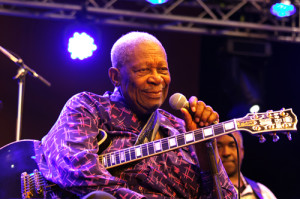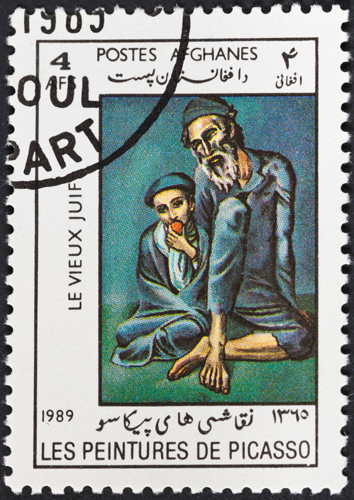Color is an essential part of how we experience the physical, aesthetic, and cultural aspects of our world. So it’s not a coincidence that artists use visual or aural color to evoke certain emotions or responses in their works.

Color influences our thinking and causes us to react. Think about the red, green, and yellow on traffic lights. All of us know what these colors mean. We use the phrases “green with envy,” “red with rage,” or a feeling of “the blues.” It’s a powerful form of communication. B.B. King plays the blues; the blues scale gives a feeling of melancholy, sadness, or depression; listen to B.B. King’s “The Thrill is Gone” or the 1959 Miles Davis album titled Kind of Blue.
Colors, like features, follow the changes of the emotions.
~ Pablo Picasso

When artists use the variety of options available in the full spectrum of a single color—monochromatic art or music—it helps our eyes or ears determine detail we might have missed in a work with multiple colors. The possibilities of one color are wide-ranging. Although it may at first seem uninteresting, once you explore the values and intensities of a single color, you soon realize the overall impact is tremendous. Pablo Picasso is perhaps the most well-known monochromatic visual artist. The works from his Blue Period (1901-1904) are painted in a cold, monochromatic blue palette. During this time he used his painting to express the many emotions of human misery and struggle. Picasso’s The Old Guitarist is a painting that truly comes from the heart—one of his most haunting images expressing profound emotion. If you explore his Rose Period, a completely different emotion emerges, one of more cheerful oranges and pinks. Delve into the monochromatic works of other artists such as Marc Chagall, Vincent van Gogh, and avant-garde art from the 20th and into the 21st century.
In music, even if instruments are similar in tone color, there is a full spectrum of ranges. A string orchestra is monochromatic because each instrument has a similar tone color, but the sound is enhanced by all of the four instruments in the string family. Listen to this section of Serenade for String Orchestra by Antonin Dvorák. The same is true for any instrument grouping of the same color—try Osteoblast by Derek Bourgeous for eight trombones or Octet Part One by Villa-Lobos for eight cellos. When you listen, whether you like the music or not, listen for the full spectrum of values that comes from a common tone color and the emotional impact it has on you as you focus on the music. Musicians develop an awareness of color and change the value and intensity of pitches to augment their expressive language.

I cannot pretend to feel impartial about colors. I rejoice with the brilliant ones and am genuinely sorry for the poor browns.
~ Sir Winston Churchill
You can become your own artist in your daily life by becoming more aware of the impact of color in the voices and sounds around you or the colors in your environment at work or at home. Develop an awareness of the impact and how you can adjust it to suit your needs and those in your work and home environments.
[sws_checklist]
- Pay attention to the various color intensities as you speak and interact with others and what the impact your voice has on others regardless of the words you use. Experiment by altering the color of your words and note whether the impact changes.
- Think about what color it felt like as you woke up in the morning. What is the emotion that color expresses?
- Explore the color in your voice, in a piece of furniture, and in a bush in your yard. What difference would there be with a different texture—contrasts of smoothness, refinement, coarseness, or roughness?
[/sws_checklist]
Developing an awareness of the complexities of color and learning how to manipulate them opens up an abundance of options. Color matters whether you’re feeling green, in the pink, or singing the blues.
— Pat
